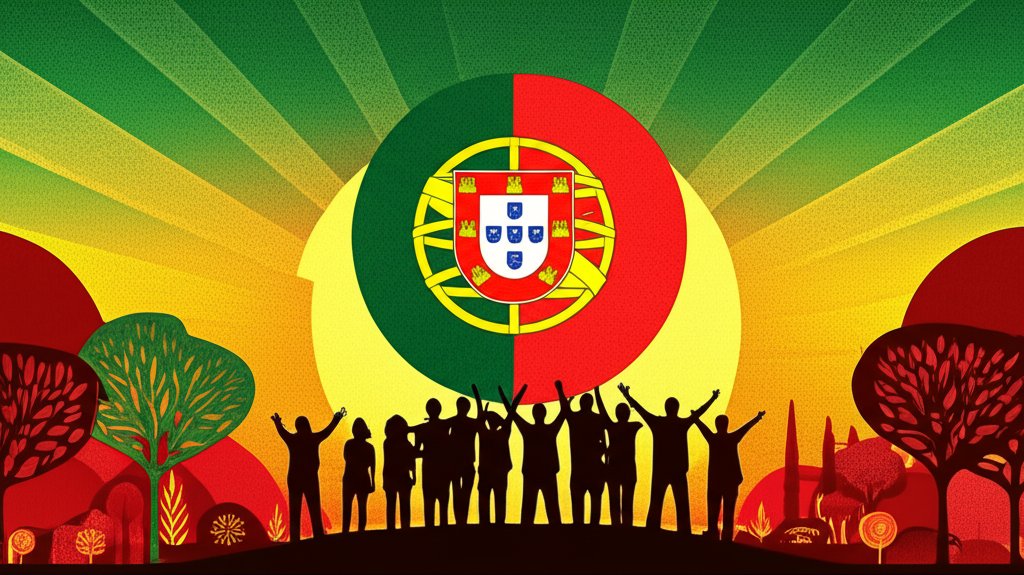Knowing how to say “good morning” in Portuguese is your first step to connecting with millions of people in Brazil, Portugal, and beyond. It’s more than just a greeting; it’s a cultural bridge. While you’re expanding your linguistic horizons, consider also exploring how greetings work in other languages. Learn Spanish greetings, for instance, to further enrich your understanding of global communication.
At a glance:
- Learn the standard and informal ways to say “good morning” in Portuguese.
- Discover regional variations and when to use them.
- Understand how emotion and tone impact your greetings.
- Pick up additional phrases to enhance your morning conversation.
- Avoid common mistakes that language learners often make.
The Foundation: “Bom dia” Explained
The most straightforward way to say “good morning” in Portuguese is “Bom dia” (pronounced boŋ ˈdʒi.ɐ). It’s universally understood in all Portuguese-speaking countries and is suitable for most situations, from talking to your neighbor to addressing a store clerk.
- Bom: Good
- Dia: Day
Think of it as the Portuguese equivalent of “Good morning” in English or Buenos días in Spanish.
When to Use “Bom dia”
“Bom dia” is generally used from sunrise to noon. While the exact cutoff isn’t strictly enforced, switching to “Boa tarde” (good afternoon) after midday is customary.
Beyond the Basics: Adding Flair to Your Morning Greetings
While “Bom dia” is perfectly acceptable, learning a few variations can make your Portuguese sound more natural and engaging.
Informal Greetings
- “Oi” (pronounced oy): A simple “Hi” that works any time of day. Best used with people you know.
- “E aí?” (pronounced ee ah-ee): Similar to “What’s up?” or “How’s it going?”. Only use with friends.
Showing Affection and Warmth
Just like in Spanish, where you might use terms like mi amor, Portuguese offers ways to express affection in your morning greetings.
- “Bom dia, meu amor” (pronounced boŋ ˈdʒi.ɐ ˈmeʊ̯ aˈmoɾ): “Good morning, my love.” Use with romantic partners.
- “Bom dia, querida/o” (pronounced boŋ ˈdʒi.ɐ keˈɾidɐ/u): “Good morning, darling/dear.” Use with close friends or family members.
Addressing Groups
- “Bom dia a todos” (pronounced boŋ ˈdʒi.ɐ a ˈto.dus): “Good morning to all.” Ideal for addressing a group of people, like colleagues or classmates.
Regional Nuances: A Quick Tour
Although “Bom dia” is standard, listening for subtle regional differences can enhance your understanding.
- Brazil: Brazilians often use a more drawn-out pronunciation of “Bom dia,” emphasizing the “Bom.”
- Portugal: The pronunciation tends to be quicker and more clipped.
The Art of the Follow-Up: Extending the Conversation

A simple “Bom dia” can be followed by a question or comment to keep the conversation flowing.
- “Tudo bem?” (pronounced ˈtu.du ˈbẽj̃): “Everything good?” or “Are you okay?”
- “Como está?” (pronounced ˈko.mu‿ʃˈta): “How are you?” – More formal than “Tudo bem?”.
- “Dormiu bem?” (pronounced doɾˈmiw ˈbẽj̃): “Did you sleep well?”
- “Bom dia! Que bom te ver!” (pronounced boŋ ˈdʒi.ɐ ki ˈbõ te ˈveɾ): “Good morning! Good to see you!”
Practical Examples
- Scenario: You’re at a local bakery in Lisbon.
- You: “Bom dia!” (with a smile)
- Baker: “Bom dia! O que vai querer hoje?” (Good morning! What would you like today?)
- Scenario: Greeting a colleague in São Paulo.
- You: “Bom dia, Tudo bem?” (Good morning, are you okay?)
- Colleague: “Tudo bem, e você?” (Everything’s fine, and you?)
Mastering the Tone: More Than Just Words
Your tone of voice and body language significantly impact how your greeting is received. A warm, friendly tone will make your “Bom dia” more genuine and welcoming.
- Smile: A genuine smile makes you more approachable.
- Eye contact: Making eye contact shows you’re present and engaged.
- Handshake/Kiss: In some cultures (and depending on familiarity), a handshake (men) or a kiss on the cheek (women, or close acquaintances) might be appropriate.
Common Pitfalls to Avoid

- Using “Boa noite” too early: “Boa noite” means “good evening/night” and should only be used after sunset.
- Incorrect pronunciation: Practice the nasal sounds in “Bom” to avoid mispronunciation. Use online resources to listen to native speakers.
- Being overly formal with friends: Stick to informal greetings with people you know well. Bom dia, Sr./Sra. sounds awkward with your best friend.
- Forgetting the follow-up: A simple “Bom dia” can feel abrupt without a follow-up question or comment.
Practical Playbook: Getting Started
Here’s a quick guide to putting your new knowledge into practice:
- Start with “Bom dia”: Master the pronunciation and use it daily.
- Add a follow-up: “Tudo bem?” is a great universal option.
- Observe native speakers: Pay attention to how they greet each other.
- Practice with a language partner: Find a Portuguese speaker to practice with. Online language exchange platforms are a great resource.
- Consider your audience: tailor your greetings to the context and your relationship with the person you are greeting.
Quick Answers: Your Burning Questions Answered
Q: Can I use “Bom dia” even if it’s almost noon?
A: Yes, you can generally use “Bom dia” until noon. However, switching to “Boa tarde” after midday is more accurate.
Q: Is “Bom dia” formal or informal?
A: “Bom dia” is generally considered neutral and appropriate for most situations.
Q: How do I pronounce “Bom dia” correctly?
A: Focus on the nasal sound in “Bom” (similar to the French “bon”) and the soft “d” in “dia.” Listen to online audio resources for accurate pronunciation.
Q: Is it rude to only say “Bom dia” and nothing else?
A: It’s not necessarily rude, but adding a follow-up question or comment makes the greeting more personable.
Actionable Close
Learning to say “good morning” in Portuguese opens doors to richer interactions and a deeper cultural understanding. Start with “Bom dia,” experiment with variations, and don’t be afraid to make mistakes. The more you practice, the more natural your greetings will become. Go ahead, brighten someone’s day with a cheerful “Bom dia”!
- Good Morning Bestie Meme Shares Morning Smiles With Friends - November 21, 2025
- Happy Morning Meme Helps You Start Your Day with Laughter - November 20, 2025
- Good Morning Memes Funny for Friends to Kickstart Their Day With Laughter - November 19, 2025










